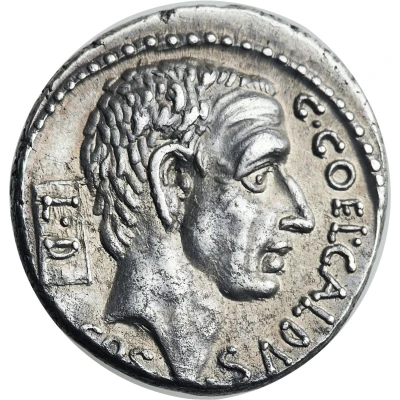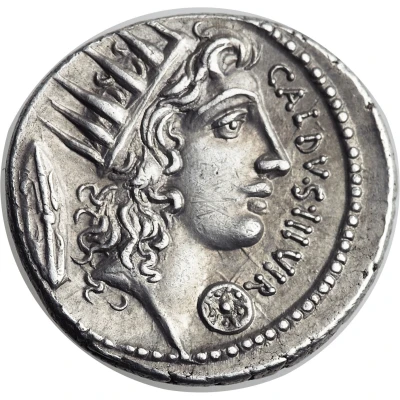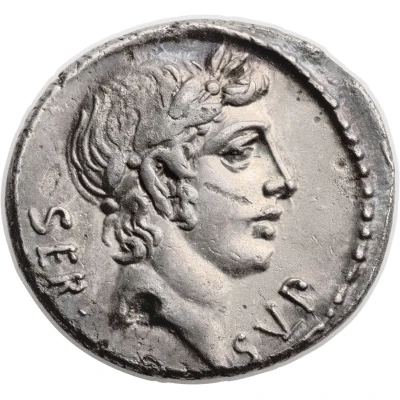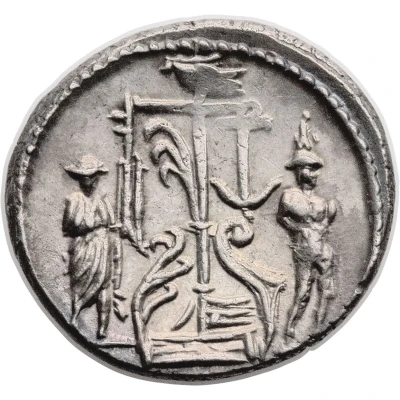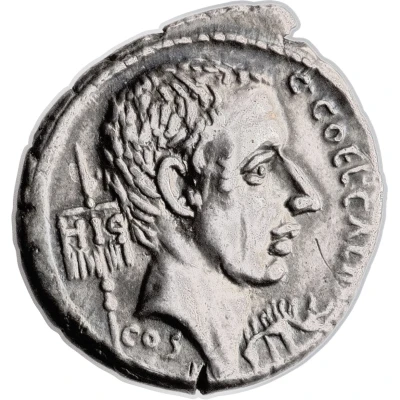
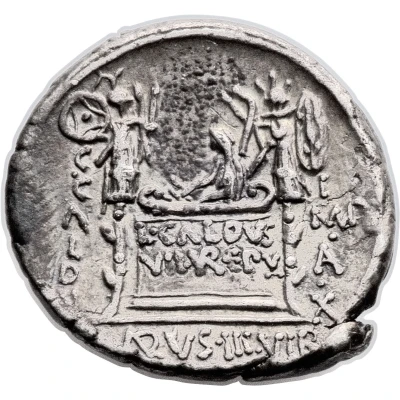

Denarius Coelia: Gaius Coelius Caldus; C•COEL•CALDVS COS HIS / L•CALDVS VII•VIR•EPVL C•CALDVS I MP•A•X CALDVS•III•VIR 51 BC
51 BC year| Silver | 3.69 g | 19 mm |
| Issuer | Rome › Roman Republic (509 BC - 27 BC) |
|---|---|
| Period | Republic (509 BC - 27 BC) |
| Type | Standard circulation coin |
| Year | 51 BC |
| Value | Denarius (1) |
| Currency | Denarius of 16 Asses (141 – 27 BC) |
| Composition | Silver |
| Weight | 3.69 g |
| Diameter | 19 mm |
| Shape | Round (irregular) |
| Technique | Hammered |
| Orientation | Variable alignment ↺ |
| Demonetized | Yes |
| Updated | 2024-10-06 |
| Numista | N#66812 |
|---|---|
| Rarity index | 97% |
Reverse
Lucius Coelius Caldus behind a table bearing inscription with VIR and VL in monograms, preparing epulum (banquet); on left, trophy with Macedonian shield; on right, trophy with carnyx and oval shield decorated with thunderbolt; in left and right fields, vertical inscriptions; in exergue, inscription with ALD in monogram.
Border of dots.
Script: Latin
Lettering:
L•CALDVS VII•VIR•EPVL
C•CALDVS I MP•A•X
CALDVS•III•VIR
Unabridged legend:
Lucius Caldus Septemviri Epulones
Caius Caldus Imperator Augur Decemvir
Caldus Triumvir
Translation:
Lucius Caldus, [member of the college of the] Seven Epulones
The Emperor Augur Gaius Caldus, [member of the] Decemviri [Sacris Faciundis]
Caldus, [Monetary] Triumvirate
Comment
The gens Coelia, or Coilia was a plebeian family, but of consular rank. Some assert that the head of this family was Coelius Vibulo Etruscus, who came to the aid of Romulus against the Sabines, and gave his name to the Coelian Mount at Rome.The Epulones formed one of the four great religious corporations, mainly in charge of organizing feasts, public banquets and games.
The Decemvir Sacris Faciundis formed another of the four great religious corporations, mainly in charge of guarding the Sybilline Books and interpreting them at the Senate's request.
Interesting fact
One interesting fact about this coin is that it features a rare and unique design element - a portrait of a Roman consul, Gaius Coelius Caldus, on the obverse (front side), while the reverse (back side) bears the image of a priestly implement called a 'lituus', which was associated with the Roman goddess Ceres. This combination of a human figure and a religious symbol was not commonly seen on Roman coins of that time, making it a distinctive and valuable piece for collectors.
Price
| Date | Mintage | VG | F | VF | XF | AU | UNC |
|---|---|---|---|---|---|---|---|
| ND (-51) | - | - | - | - | - | - |
Values in the table are based on evaluations by sales realized on Internet platforms. They serve as an indication only for Denarius (Coelia: Gaius Coelius Caldus; C•COEL•CALDVS COS HIS / L•CALDVS VII•VIR•EPVL C•CALDVS I MP•A•X CALDVS•III•VIR) (51 BC) coin.
